















































































































































































































You probably noticed the tables of information we placed in each chapter. Trajectory has created an advanced method for processing the words contained with books through our "semantic lens," a natural language processing program. This additional information allows readers to interact with each book in a new way. In this section, we are presenting statistics and illustrations to help you interpret this book through visualized data. Learn more about what we do at www.trajectory.com.
The Summary of Statistics breaks down this book into its building blocks. This will help you to understand the flow and structure of this book in relation to other titles that Trajectory has processed.
| Statistic | This Book |
|---|---|
| Chapter Count | 37 |
| Paragraph Count | 2,362 |
| Sentence Count | 6,344 |
| Word Count | 185,826 |
| Distinct Word Count | 8,655 |
| Word Count: noun | 43,345 |
| Word Count: adjective | 11,784 |
| Word Count: verb | 19,975 |
| Word Count: other | 2,919 |
| Word Count: adverb | 3,997 |
| Distinct Word Count: noun | 5,265 |
| Distinct Word Count: adjective | 1,874 |
| Distinct Word Count: verb | 1,713 |
| Distinct Word Count: other | 518 |
| Distinct Word Count: adverb | 538 |
| Average Sentence Length | 34.35 |
| Average Word Length | 4.48 |
| Average Sentiment | -0.0016 |
This Reading Time table shows how long it typically takes readers of different levels of skill and education to complete this book.
| Reader | Time |
|---|---|
| Third-grade Student | 28:09 |
| Eighth-grade Student | 15:29 |
| Average Adult | 12:23 |
| Above Average Adult | 6:12 |
| Speed Reader | 3:06 |
This illustration shows where a character appears within the book. This can help you track down your favorite character within the story and to see where characters overlap.
Christian
|
 |
Christ
|
 |
Russian
|
 |
Siegfried
|
 |
Russia
|
 |
Christianity
|
 |
Christians
|
 |
Europe
|
 |
French
|
 |
Wagner
|
 |
France
|
 |
Beethoven
|
 |
European
|
 |
German
|
 |
Wotan
|
 |
Greek
|
 |
English
|
 |
Greeks
|
 |
Germany
|
 |
America
|
 |
Moscow
|
 |
Baumgarten
|
 |
Siegmund
|
 |
Hegel
|
 |
Chinese
|
 |
Orel
|
 |
Ballou
|
 |
Roman
|
 |
England
|
 |
Helchitsky
|
 |
Plato
|
 |
Brünnhilda
|
 |
Jews
|
 |
Schelling
|
 |
Schiller
|
 |
Tula
|
 |
Rome
|
 |
Verlaine
|
 |
Bible
|
 |
Hebrew
|
 |
Kant
|
 |
Pushkin
|
 |
Alberich
|
 |
Goethe
|
 |
Hagen
|
 |
Germans
|
 |
Paris
|
 |
Aristotle
|
 |
Catholic
|
 |
Joseph
|
 |
United States
|
 |
Jesus Christ
|
 |
Sieglinda
|
 |
American
|
 |
Garrison
|
 |
Lutheran
|
 |
Russians
|
 |
Christendom
|
 |
Peace
|
 |
Raphael
|
 |
Schopenhauer
|
 |
Jesus
|
 |
Rhine
|
 |
Kralik
|
 |
London
|
 |
Peter
|
 |
Dymond
|
 |
Guyau
|
 |
John
|
 |
Indians
|
 |
Shakespear
|
 |
Matt
|
 |
Catholics
|
 |
Austria
|
 |
Socrates
|
 |
non-Christian
|
 |
Italian
|
 |
MATTHEW
|
 |
Napoleon
|
 |
St. Petersburg
|
 |
Turkey
|
 |
Gunther
|
 |
Bach
|
 |
Renan
|
 |
Japanese
|
 |
Darwin
|
 |
Caprivi
|
 |
Genghis Khan
|
 |
China
|
 |
Indian
|
 |
Baudelaire
|
 |
Dickens
|
 |
Nicene
|
 |
Chopin
|
 |
Mennonites
|
 |
JOHN viii
|
 |
Vogüé
|
 |
Catharine
|
 |
Mallarmé
|
 |
Virgin
|
 |
Iver
|
 |
Nero
|
 |
Romans
|
 |
Adin Ballou
|
 |
non-Christians
|
 |
Schasler
|
 |
Zola
|
 |
Hugo
|
 |
Old
|
 |
Hunding
|
 |
Dante
|
 |
Huysmans
|
 |
un-Christian
|
 |
Tolstoï
|
 |
Boulanger
|
 |
Nietzsche
|
 |
Slavs
|
 |
Maupassant
|
 |
Jewish
|
 |
New Testaments
|
 |
Richard Strauss
|
 |
Brahms
|
 |
Spencer
|
 |
African
|
 |
Charkov
|
 |
Erda
|
 |
Venus
|
 |
Maeterlinck
|
 |
Mozart
|
 |
Bruloff
|
 |
Stenka Razin
|
 |
Diderot
|
 |
Roman Catholic
|
 |
Farrar
|
 |
Molière
|
 |
Shaftesbury
|
 |
Italy
|
 |
Montesquieu
|
 |
Benard
|
 |
Lévêque
|
 |
Revue des Revues
|
 |
Maxime
|
 |
Ispravnik
|
 |
Piotr Sidorov
|
 |
Mount
|
 |
Assisi
|
 |
Count Tolstoï
|
 |
Egyptian
|
 |
Herbert Spencer
|
 |
Kunst des Geschmacksinns
|
 |
Buddha
|
 |
Boston
|
 |
Fichte
|
 |
Trans-Caspian
|
 |
Homer
|
 |
Folgeldt
|
 |
Mahommedans
|
 |
Buddhists
|
 |
Keltchitsky
|
 |
Gontchareff
|
 |
Tourgenieff
|
 |
Sunday-school
|
 |
Dans l'interminable Ennui de la
|
 |
Positivist
|
 |
Slavonic
|
 |
Milton
|
 |
Richard Strausses
|
 |
Bayreuth
|
 |
Haydn
|
 |
Bourget
|
 |
Vasnetsoff
|
 |
Dostoievsky
|
 |
Jules Breton
|
 |
Robert Macaire
|
 |
Origen
|
 |
Pagan
|
 |
Roman Cæsars
|
 |
Sevastopol
|
 |
Tatiana Tolstoï
|
 |
St. Thomas
|
 |
Okhotny Ryad
|
 |
Turk
|
 |
Vienna
|
 |
Moneta
|
 |
Allen
|
 |
Kaspar Hauser
|
 |
Nuremberg
|
 |
Buddhism
|
 |
Europeans
|
 |
Circassian
|
 |
Sportsman
|
 |
Byron
|
 |
Rostand
|
 |
Turko-Grecian
|
 |
Boris Godunoff
|
 |
Ostrovsky
|
 |
Weber
|
 |
Rossini
|
 |
Aline Delano
|
 |
Aylmer Maude
|
 |
Maeterlincks
|
 |
Böcklins
|
 |
Hellenism
|
 |
Bastien Lepage
|
 |
Cleopatra
|
 |
Milo
|
 |
Suspends
|
 |
Gray
|
 |
This illustration highlights the usage of a character's name in popular literature before and after the publication of this book. This may help you see how the characters from this book may have contributed to popular culture. The statistical data is derived from Google's index of more than 5 million books and 500 billion words.
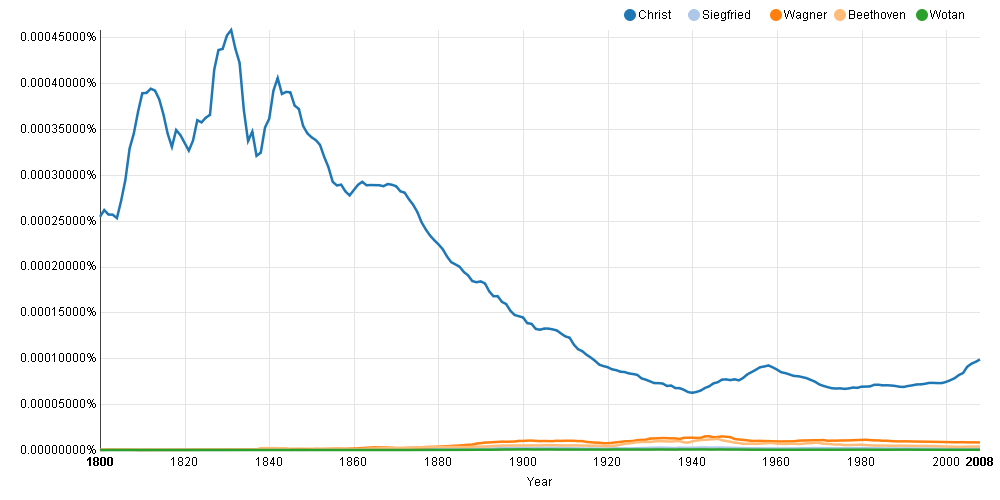
This illustration highlights the appearance of the title, author and publisher's name in books before and after the publication of this book. This may help you see the impact this book may have had on popular culture. The statistical data is derived from Google's index of more than 5 million books and 500 billion words.
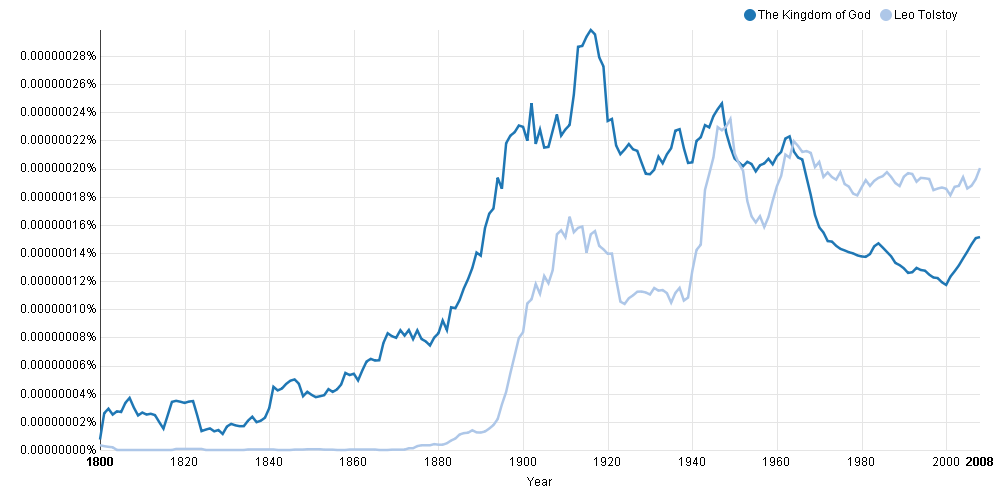
This illustration highlights a character's interaction with another character within the book. This can help a reader understand if characters have overlapped or interacted with each other.
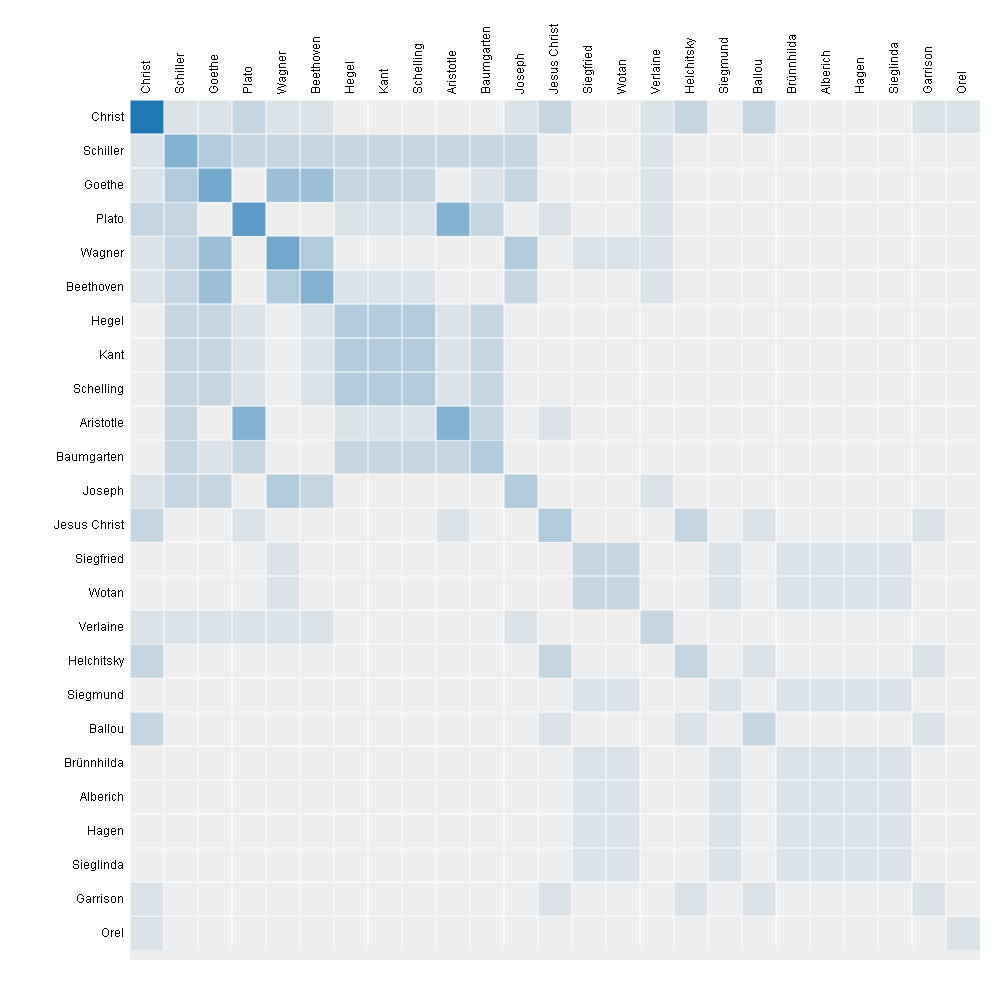
This illustration highlights a character's frequency relative to a location mentioned within the book.
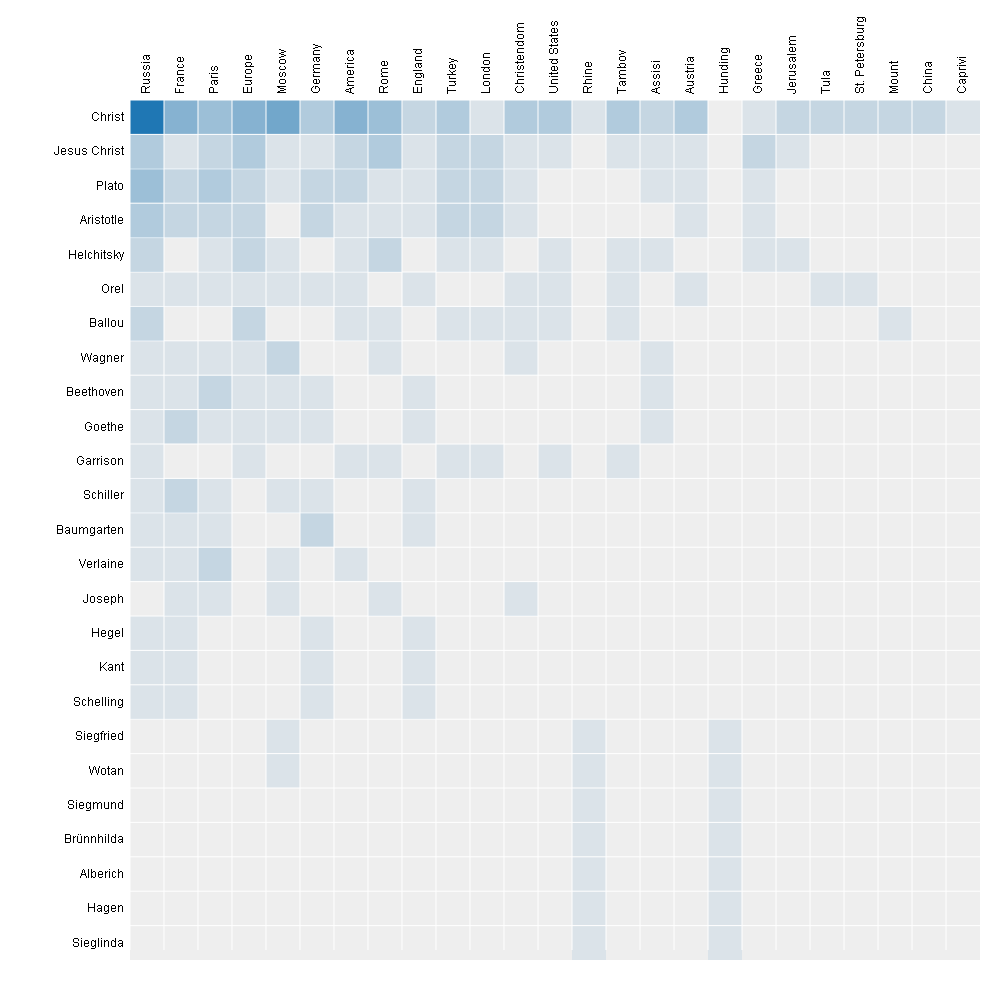
These illustrations show how ofter a verb is used in relation to a particular character. The larger the size of the text, the more often the verb is used along with that character.


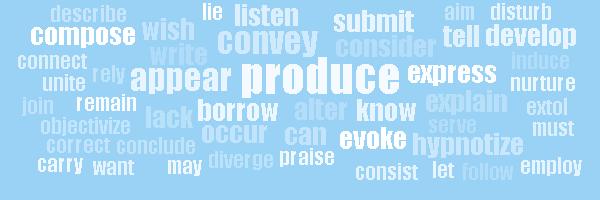

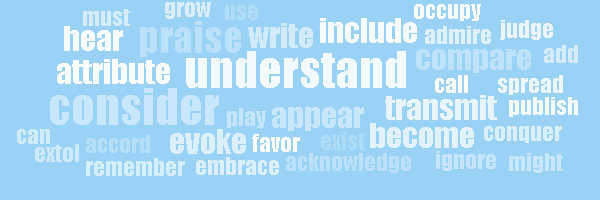
This table shows the most popular nouns, verbs, and adjectives within this book. This helps a reader to understand how the number of instances of people, places, and things can make up a book, and how certain adjectives are commonly used to describe the nouns within a single story.
| Rank | Word | Count |
|---|---|---|
| 1 | man | 1,715 |
| 2 | art | 1,175 |
| 3 | life | 712 |
| 4 | can | 572 |
| 5 | may | 438 |
| 6 | people | 435 |
| 7 | time | 409 |
| 8 | christian | 384 |
| 9 | work | 373 |
| 10 | doctrine | 333 |
| 11 | feeling | 324 |
| 12 | violence | 324 |
| 13 | state | 289 |
| 14 | know | 284 |
| 15 | christ | 271 |
| 16 | order | 270 |
| 17 | beauty | 268 |
| 18 | government | 267 |
| 19 | church | 257 |
| 20 | must | 255 |
| 21 | truth | 244 |
| 22 | love | 233 |
| 23 | become | 231 |
| 24 | give | 223 |
| 25 | christianity | 212 |
| 26 | law | 211 |
| 27 | authority | 206 |
| 28 | god | 206 |
| 29 | good | 206 |
| 30 | therefore | 205 |
| 31 | human | 205 |
| 32 | present | 202 |
| 33 | believe | 201 |
| 34 | evil | 200 |
| 35 | class | 198 |
| 36 | consider | 192 |
| 37 | true | 191 |
| 38 | society | 190 |
| 39 | find | 187 |
| 40 | war | 185 |
| 41 | exist | 183 |
| 42 | certain | 182 |
| 43 | part | 178 |
| 44 | word | 173 |
| 45 | come | 172 |
| 46 | thing | 172 |
| 47 | question | 171 |
| 48 | form | 169 |
| 49 | religious | 169 |
| 50 | day | 166 |
| 51 | condition | 159 |
| 52 | yet | 158 |
| 53 | act | 156 |
| 54 | call | 156 |
| 55 | power | 155 |
| 56 | understand | 152 |
| 57 | world | 150 |
| 58 | seem | 148 |
| 59 | year | 147 |
| 60 | use | 146 |
| 61 | accord | 144 |
| 62 | nation | 144 |
| 63 | regard | 143 |
| 64 | always | 142 |
| 65 | live | 142 |
| 66 | means | 142 |
| 67 | science | 141 |
| 68 | subject | 141 |
| 69 | position | 140 |
| 70 | place | 140 |
| 71 | artist | 140 |
| 72 | express | 140 |
| 73 | hand | 137 |
| 74 | social | 134 |
| 75 | individual | 134 |
| 76 | mankind | 130 |
| 77 | soldier | 130 |
| 78 | thus | 129 |
| 79 | conception | 129 |
| 80 | shall | 128 |
| 81 | transmit | 127 |
| 82 | opinion | 127 |
| 83 | military | 125 |
| 84 | meaning | 122 |
| 85 | murder | 121 |
| 86 | whole | 120 |
| 87 | book | 120 |
| 88 | general | 119 |
| 89 | hold | 117 |
| 90 | music | 116 |
| 91 | need | 115 |
| 92 | duty | 113 |
| 93 | reason | 113 |
| 94 | system | 110 |
| 95 | object | 107 |
| 96 | change | 107 |
| 97 | humanity | 107 |
| 98 | great | 106 |
| 99 | feel | 105 |
| 100 | labor | 105 |
This table shows the most popular nouns within this book.
| Rank | Word | Count |
|---|---|---|
| 1 | man | 1,709 |
| 2 | art | 1,169 |
| 3 | life | 712 |
| 4 | people | 435 |
| 5 | time | 408 |
| 6 | doctrine | 333 |
| 7 | work | 327 |
| 8 | violence | 324 |
| 9 | feeling | 324 |
| 10 | state | 280 |
| 11 | christ | 271 |
| 12 | beauty | 268 |
| 13 | government | 267 |
| 14 | church | 257 |
| 15 | truth | 244 |
| 16 | order | 236 |
| 17 | christianity | 212 |
| 18 | law | 211 |
| 19 | christian | 207 |
| 20 | authority | 206 |
| 21 | god | 206 |
| 22 | class | 198 |
| 23 | society | 190 |
| 24 | war | 185 |
| 25 | part | 178 |
This table shows the most popular verbs used in this book. This can help a reader get an idea of how the writer influenced the actions of the characters over the course of the book.
| Rank | Word | Count |
|---|---|---|
| 1 | can | 572 |
| 2 | may | 426 |
| 3 | know | 283 |
| 4 | must | 255 |
| 5 | become | 231 |
| 6 | give | 223 |
| 7 | believe | 201 |
| 8 | consider | 192 |
| 9 | find | 187 |
| 10 | exist | 183 |
| 11 | come | 172 |
| 12 | understand | 152 |
| 13 | call | 149 |
| 14 | seem | 148 |
| 15 | express | 138 |
| 16 | live | 137 |
| 17 | accord | 128 |
| 18 | transmit | 127 |
| 19 | shall | 127 |
| 20 | hold | 112 |
| 21 | feel | 105 |
| 22 | follow | 103 |
| 23 | teach | 100 |
| 24 | use | 100 |
| 25 | might | 100 |
This table shows the most popular adjectives used in this book. This can help a reader understand how things are commonly described within a book, by that author, and during the time period in which that book was written.
| Rank | Word | Count |
|---|---|---|
| 1 | human | 205 |
| 2 | good | 200 |
| 3 | true | 191 |
| 4 | present | 182 |
| 5 | certain | 181 |
| 6 | christian | 177 |
| 7 | religious | 169 |
| 8 | social | 134 |
| 9 | military | 124 |
| 10 | evil | 112 |
| 11 | great | 102 |
| 12 | possible | 102 |
| 13 | whole | 99 |
| 14 | general | 96 |
| 15 | real | 91 |
| 16 | necessary | 84 |
| 17 | free | 83 |
| 18 | public | 83 |
| 19 | impossible | 79 |
| 20 | moral | 74 |
| 21 | upper | 74 |
| 22 | individual | 73 |
| 23 | false | 71 |
| 24 | beautiful | 69 |
| 25 | common | 67 |
This illustration is our unique representation of how often positive and negative events occur in this book. The sentiment is presented on a scale of +1.0 to -1.0.
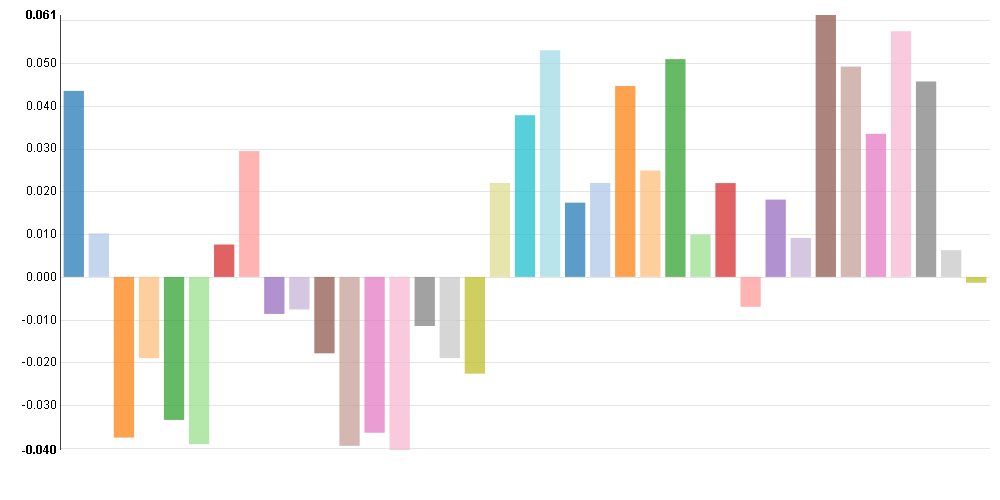
This illustration shows how many words are used in each chapter.

This illustration shows how many paragraphs are in each chapter.
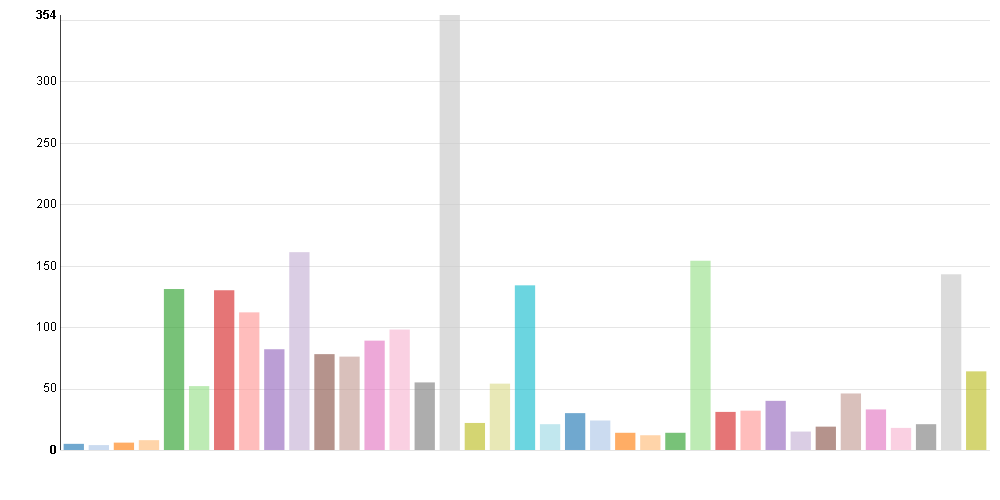
The Chapter Sentiment and Composition table relates the sentiment of the chapter narrative to the structure and format statistics.
| Chapter | Sentiment | Words | Paragraphs |
|---|---|---|---|
| INTRODUCTION | 0.0435 | 478 | 5 |
| AUTHOR'S PREFACE | 0.0102 | 275 | 4 |
| THE KINGDOM OF GOD IS WITHIN YOU; | -0.0376 | 86 | 6 |
| INTRODUCTORY | -0.0190 | 371 | 8 |
| CHAPTER I | -0.0335 | 9,434 | 131 |
| CHAPTER II | -0.0391 | 5,936 | 52 |
| CHAPTER III | 0.0076 | 11,272 | 130 |
| CHAPTER IV | 0.0294 | 7,915 | 112 |
| CHAPTER V | -0.0087 | 7,605 | 82 |
| CHAPTER VI | -0.0076 | 10,056 | 161 |
| CHAPTER VII | -0.0179 | 6,498 | 78 |
| CHAPTER VIII | -0.0395 | 8,234 | 76 |
| CHAPTER IX | -0.0364 | 8,348 | 89 |
| CHAPTER X | -0.0405 | 8,751 | 98 |
| CHAPTER XI | -0.0115 | 4,064 | 55 |
| CHAPTER XII | -0.0190 | 29,944 | 354 |
| CHAPTER I | -0.0226 | 2,340 | 22 |
| CHAPTER II | 0.0220 | 3,012 | 54 |
| CHAPTER III | 0.0378 | 5,262 | 134 |
| CHAPTER IV | 0.0530 | 2,382 | 21 |
| CHAPTER V | 0.0174 | 2,155 | 30 |
| CHAPTER VI | 0.0220 | 1,993 | 24 |
| CHAPTER VII | 0.0446 | 1,605 | 14 |
| CHAPTER VIII | 0.0249 | 1,276 | 12 |
| CHAPTER IX | 0.0509 | 1,837 | 14 |
| CHAPTER X | 0.0099 | 7,188 | 154 |
| CHAPTER XI | 0.0219 | 3,752 | 31 |
| CHAPTER XII | -0.0070 | 2,826 | 32 |
| CHAPTER XIII | 0.0181 | 4,611 | 40 |
| CHAPTER XIV | 0.0091 | 2,948 | 15 |
| CHAPTER XV | 0.0613 | 1,143 | 19 |
| CHAPTER XVI | 0.0492 | 5,969 | 46 |
| CHAPTER XVII | 0.0335 | 3,609 | 33 |
| CHAPTER XVIII | 0.0575 | 1,311 | 18 |
| CHAPTER XIX | 0.0457 | 2,334 | 21 |
| CHAPTER XX | 0.0063 | 7,963 | 143 |
| Translations of French poems and prose quoted in Chapter X. | -0.0014 | 1,043 | 64 |